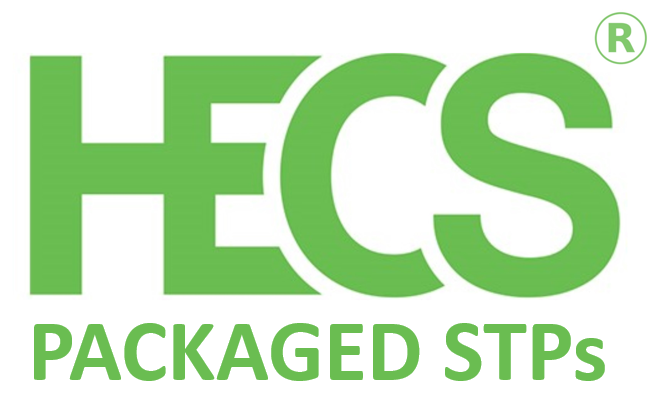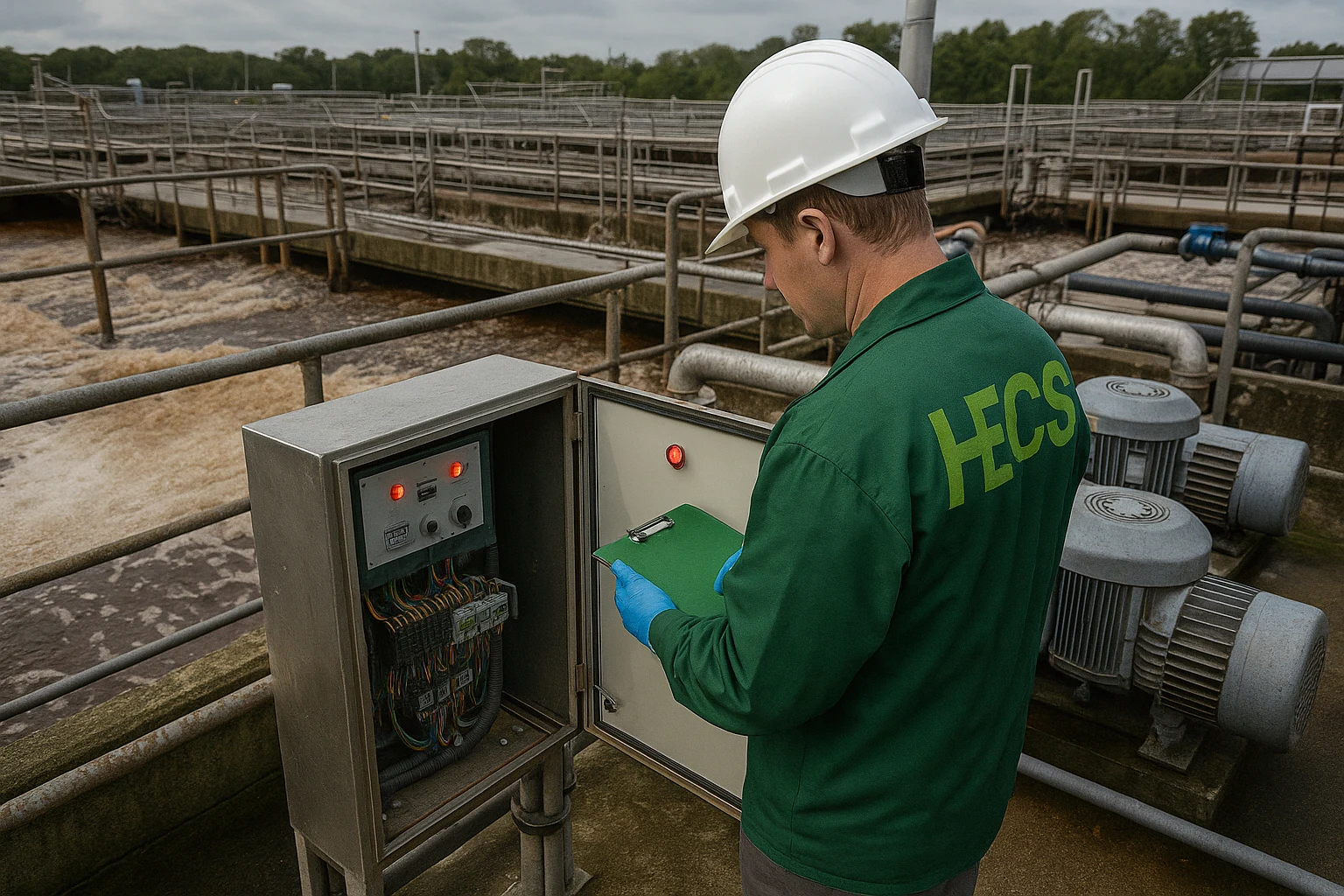Malfunctions in STP Systems
Sewage Treatment Plants (STPs) are the backbone of environmental compliance for industries, residential complexes, and commercial establishments. A well-functioning STP ensures treated effluent meets CPCB/SPCB discharge standards, prevents groundwater contamination, and protects your organisation from hefty environmental penalties. However, malfunctions in STP systems can lead to severe consequences — from show cause notices to emergency shutdowns costing lakhs in fines.
The challenge lies in early detection. Most malfunctions in STP systems don’t occur overnight; they build up gradually through subtle warning signs that, if overlooked, can escalate into major breakdowns. Understanding these early indicators of sewage treatment plant troubleshooting helps facility managers prevent costly repairs, maintain compliance, and ensure uninterrupted operations.
Top Warning Signs of a Malfunctioning STP
Recognising STP warning signs requires systematic observation of your plant’s performance parameters. Here are the most critical indicators that demand immediate attention:
1. Persistent Foul Odour
A properly functioning STP should produce minimal odour, especially in the aeration zones where aerobic bacteria break down organic matter. When you notice a persistent bad smell from STP areas, particularly hydrogen sulfide (rotten egg smell) or ammonia-like odours, it signals serious issues.
This typically indicates oxygen deficiency in the aeration tank, leading to anaerobic conditions. Poor STP performance in oxygen transfer can result from blower failures, clogged diffusers, or excessive organic loading. The problem often manifests first in the sludge holding area before spreading to other treatment zones.
2. Unusual Noise or Vibration in Blowers & Pumps
Mechanical equipment forms the heart of any STP system. When blowers, pumps, or motors start producing unusual sounds – grinding, squealing, or excessive vibration – it signals impending failure. These common STP faults often stem from worn bearings, imbalanced impellers, or electrical issues.
Blower pressure imbalances directly impact aeration efficiency, reducing dissolved oxygen levels critical for biological treatment. Similarly, pump malfunctions can disrupt sludge return ratios, affecting the entire treatment process.
3. Floating Solids or Poor Clarification
The clarifier tank should produce crystal-clear effluent with minimal suspended solids. When you observe floating sludge, excessive turbidity, or poor settlement, it indicates serious process imbalances.
This condition often results from improper Mixed Liquor Suspended Solids (MLSS) levels, inadequate sludge return, or clarifier overloading. Aeration tank issues, such as insufficient oxygen or shock loading, can also cause biomass to lose settling characteristics, leading to poor clarification.
4. Sludge Overflow or Scum Build-Up
Overflow in STP tank areas, particularly around clarifiers or sludge thickeners, signals critical operational problems. This typically occurs due to blocked sludge return lines, delayed desludging schedules, or pump failures in the sludge handling system.
Excessive scum formation on tank surfaces indicates poor skimming operations or hydraulic overloading. These conditions can trigger backflow into upstream processes, potentially causing complete system breakdown.
5. Sudden Spike in Effluent Parameters (BOD/COD/pH)
Regular monitoring of treated effluent quality is crucial for compliance. When parameters like Biochemical Oxygen Demand (BOD), Chemical Oxygen Demand (COD), or pH levels suddenly exceed prescribed limits, it indicates severe treatment failure.
This deterioration can result from chemical dosing failures, inadequate aeration, toxic shock loading, or biological process upset. Such compliance issues in sewage treatment can lead to immediate CPCB notices and operational shutdowns.
Risks of Ignoring These Malfunctions
Delaying action on these warning signs can have catastrophic consequences for your facility:
Legal and Financial Penalties: Non-compliance with discharge standards can result in fines ranging from ₹1 lakh to ₹25 lakhs under the Water Act and National Green Tribunal directives. Repeat violations may lead to operational shutdowns and criminal liability.
Property Damage: Sewage overflows can damage building foundations, contaminate groundwater, and create health hazards for residents or workers. Emergency cleanup costs often exceed regular maintenance expenses by 10-15 times.
Operational Disruptions: Sudden STP breakdowns can halt operations in industries dependent on treated water recycling or continuous discharge permissions. This downtime translates to significant revenue losses.
Reputation Damage: Environmental violations attract media attention and regulatory scrutiny, potentially affecting business relationships and future project approvals.
How to Prevent STP Failures with Regular Monitoring?
Proactive maintenance and monitoring form the foundation of reliable STP operations:
Preventive Maintenance Schedules: Regular inspection of mechanical equipment, cleaning of diffusers, and calibration of instruments prevent minor issues from escalating into major failures.
Professional AMC Services: Annual Maintenance Contracts with qualified engineers ensure systematic upkeep, timely repairs, and compliance documentation.
Laboratory Testing: Regular analysis of influent and effluent samples helps identify process deviations before they impact final discharge quality.
HECS Resolved a Major Sludge Overflow in a 500 KLD STP
- A textile manufacturing unit in Tamil Nadu faced a critical situation when their 500 KLD STP experienced severe sludge overflow, threatening TNPCB compliance and potentially halting production.
- HECS engineers conducted an emergency assessment and identified the root cause: a clogged return activated sludge pump that had been operating at reduced capacity for weeks. The gradual performance decline went unnoticed until complete system failure occurred.
- Our team implemented immediate corrective measures, including pump replacement, sludge line cleaning, and process rebalancing. Within 48 hours, the STP was restored to full functionality with effluent parameters meeting discharge standards.
- This rapid intervention helped the client avoid potential penalties of ₹5 lakhs and prevented production shutdown that would have cost significantly more in lost revenue.
Stay Compliant, Prevent Downtime – Trust HECS STP Expertise
Early identification of STP system malfunction is crucial for maintaining environmental compliance and operational efficiency. The warning signs discussed above – from persistent odours to parameter deviations – provide clear indicators that demand immediate attention.
HECS offers comprehensive STP services across India, including expert operation and maintenance (O&M), customised AMC packages, emergency troubleshooting, and detailed STP audits. Whether your facility operates a 50 KLD community STP or a 5 MLD industrial treatment plant, our certified engineers ensure optimal performance and strict adherence to CPCB/SPCB norms.
Don’t wait for a compliance notice or system breakdown to address STP issues. Contact HECS today for a free STP health check and discover how our proactive maintenance approach can protect your operations while ensuring environmental responsibility.
Let's Talk Sustainability – Contact HECS Today!
Looking for reliable wastewater treatment solutions? Get expert guidance and find the perfect STP for your needs today!
Frequently Asked Questions
1. What causes STP blower failure?
STP blower failure occurs when the aeration system stops providing adequate oxygen to biological treatment processes. Common causes include motor burnout, clogged air filters, bearing wear, power supply issues, and excessive back pressure from blocked diffusers. Regular maintenance, filter cleaning, and monitoring amperage can prevent most blower failures.
2. Why does my STP smell bad?
Foul odors from STP systems indicate anaerobic conditions or process imbalances. The smell typically results from insufficient aeration, septicity in inlet sewage, dead zones in tanks, or excessive organic loading. Proper aeration, regular desludging, and maintaining optimal dissolved oxygen levels (2-4 mg/L) eliminate most odor problems.
3. What causes sludge overflow in STP clarifiers?
Sludge overflow happens when settled sludge exceeds the clarifier’s capacity or removal rate. This occurs due to excessive sludge production, inadequate return activated sludge (RAS) pumping, clarifier overloading, or poor settling characteristics. Increasing sludge wasting frequency and optimizing RAS rates resolve overflow issues.
4. How do you fix poor BOD and COD removal in STP?
Poor BOD/COD removal indicates inadequate biological treatment efficiency. This results from insufficient aeration, low MLSS (Mixed Liquor Suspended Solids) concentration, toxic shock loads, pH imbalances, or inadequate retention time. Solutions include adjusting aeration rates, maintaining proper MLSS levels (2000-4000 mg/L), and ensuring optimal pH (6.5-8.5).
5. What causes STP pump failure?
STP pump failure stems from mechanical wear, electrical issues, or operational problems. Common causes include impeller clogging with debris, motor overheating, seal leakage, power fluctuations, and dry running. Regular inspection, debris screening, and proper wet well design prevent most pump failures.
6.Why is my STP producing foamy effluent?
Foamy effluent indicates biological process disruption or the presence of surfactants. Foam formation occurs due to filamentous bacteria growth, high organic loading, presence of detergents, or nutrient imbalances. Controlling organic loading, maintaining proper F/M ratio, and adding anti-foam agents resolve foaming issues.
7. What causes high turbidity in STP treated water?
High turbidity in treated effluent results from poor solid-liquid separation. This occurs due to inadequate settling time, short-circuiting in clarifiers, high MLSS carry-over, or biological process upset. Solutions include optimizing hydraulic loading, improving clarifier design, and maintaining proper sludge blanket levels.
8. How do you troubleshoot STP electrical control panel issues?
Electrical control panel malfunctions disrupt automated STP operations. Common problems include timer failures, relay malfunctions, loose connections, moisture ingress, and power supply fluctuations. Regular electrical maintenance, moisture protection, voltage monitoring, and component replacement based on manufacturer schedules prevent control failures.
9. What causes STP inlet pipe blockages?
Inlet pipe blockages restrict sewage flow into treatment systems. Blockages result from accumulated debris, grease buildup, root intrusion, sediment deposition, or foreign object lodging. Regular inspection, grease trap maintenance, root cutting, and proper screening systems prevent inlet blockages.
10. Why does STP consume excessive power?
Excessive power consumption indicates inefficient equipment operation or system overloading. High energy use results from oversized blowers, worn pump impellers, fouled diffusers, excessive aeration, or equipment running beyond design capacity. Energy audits, equipment right-sizing, regular maintenance, and process optimization reduce power consumption significantly.

